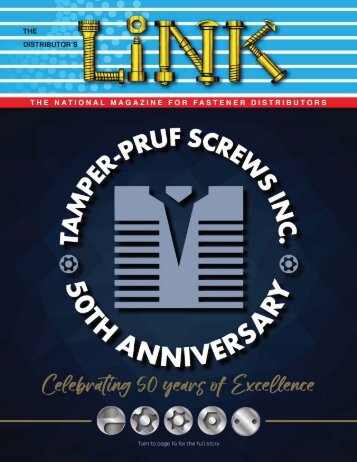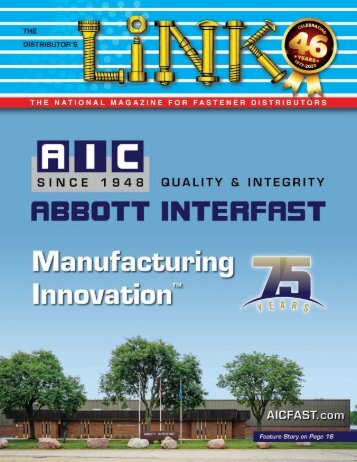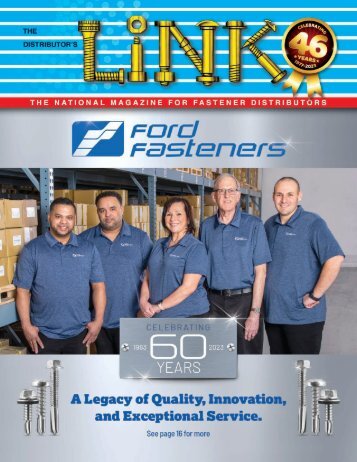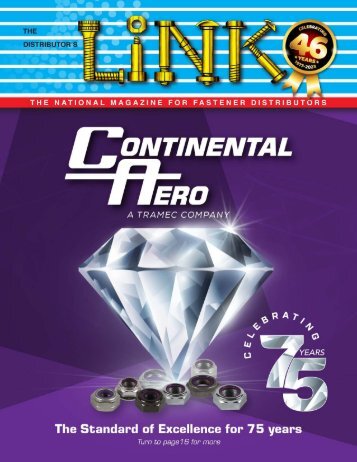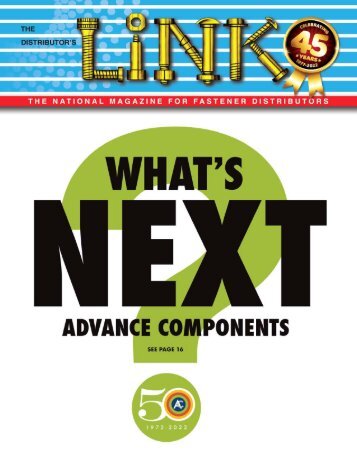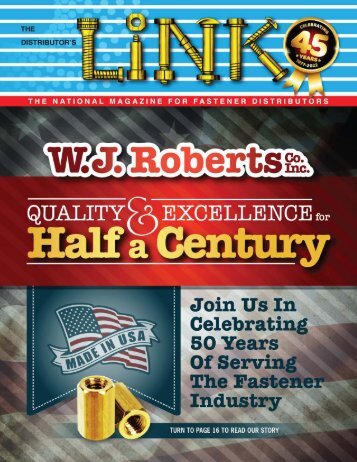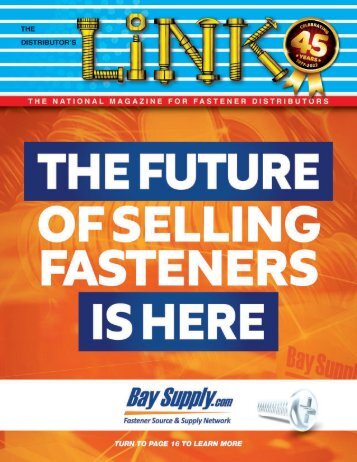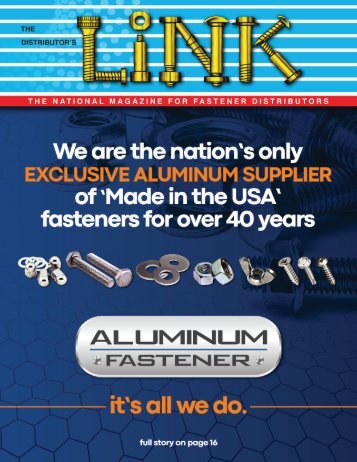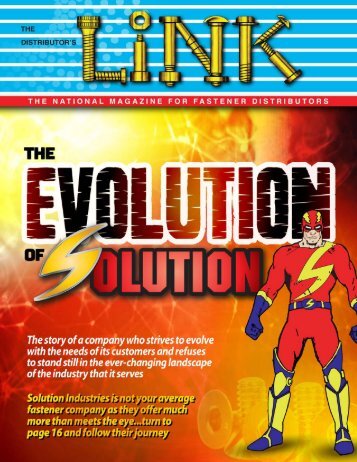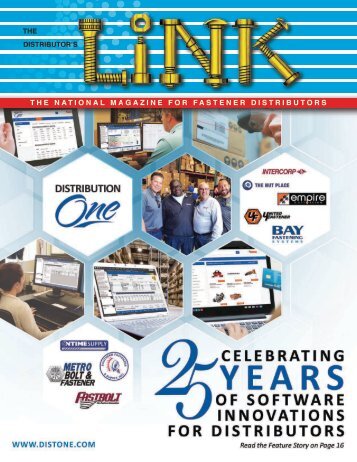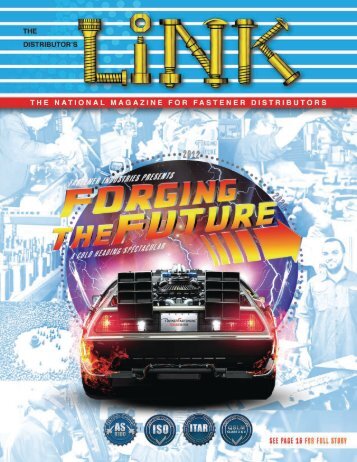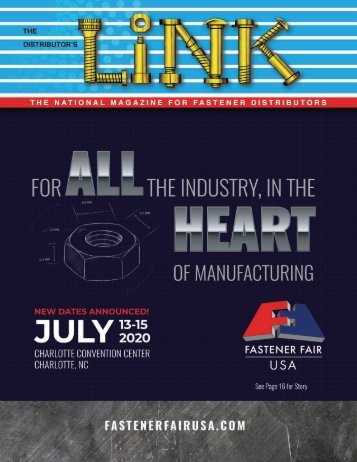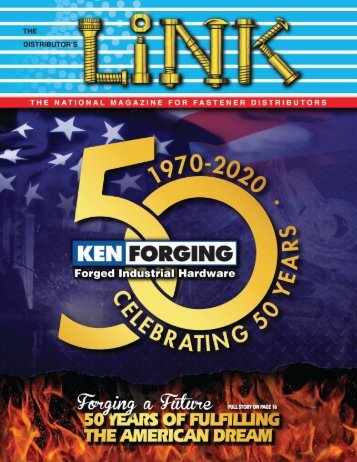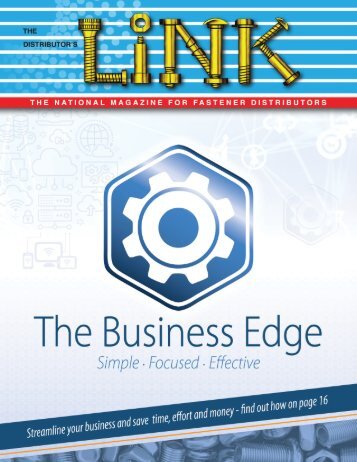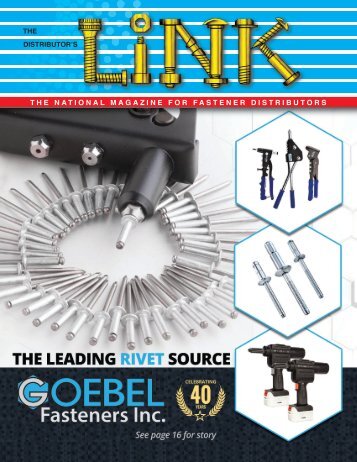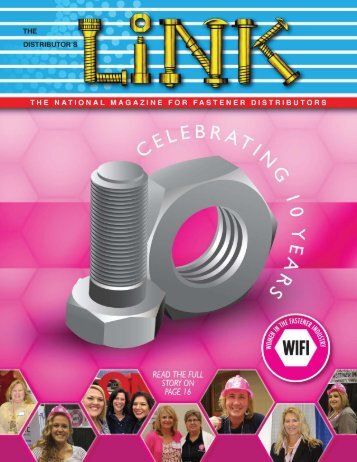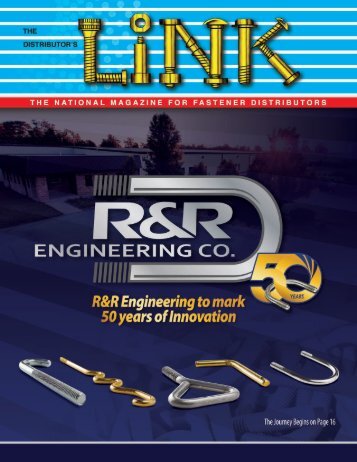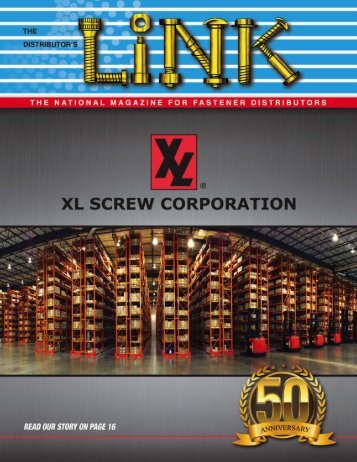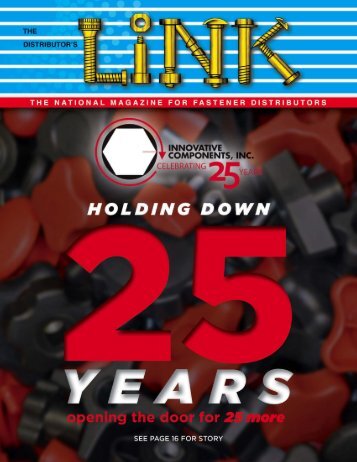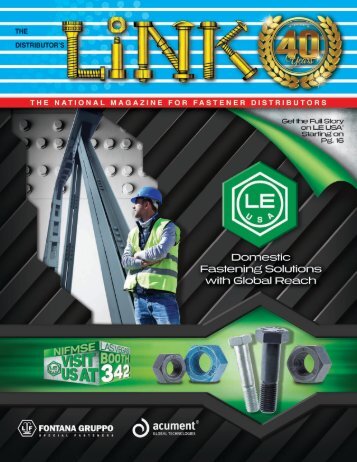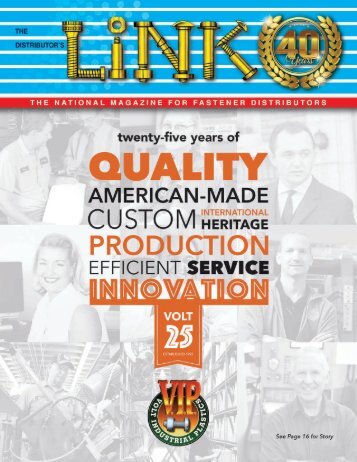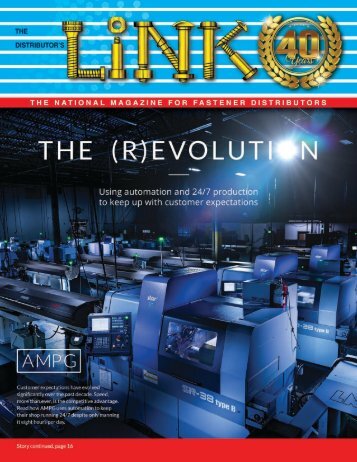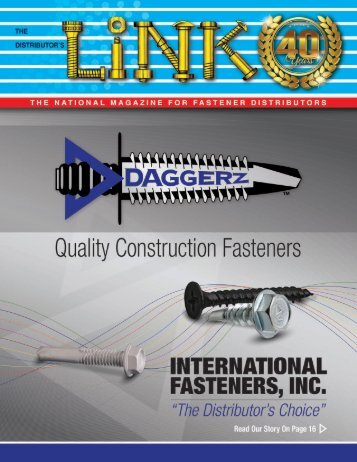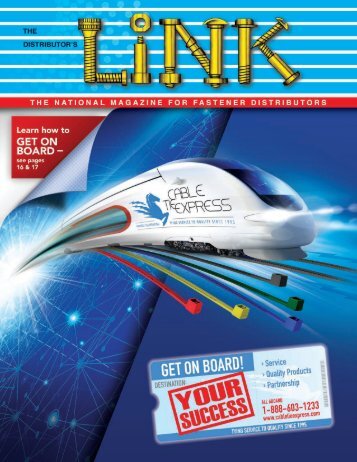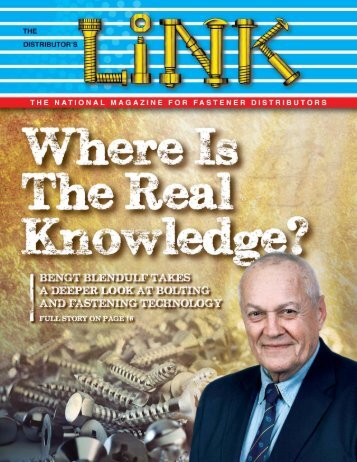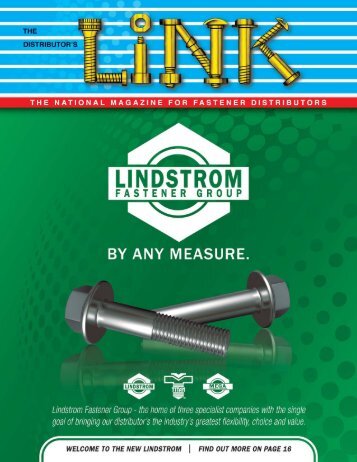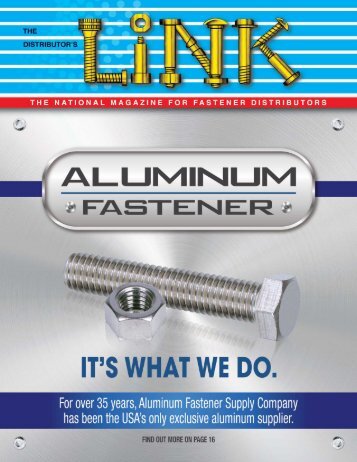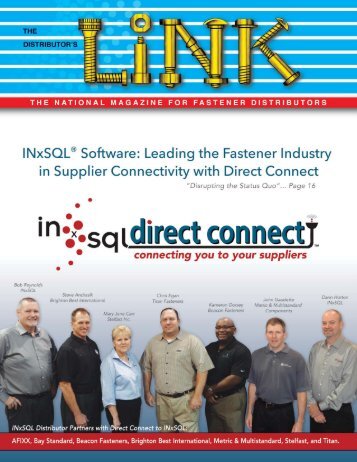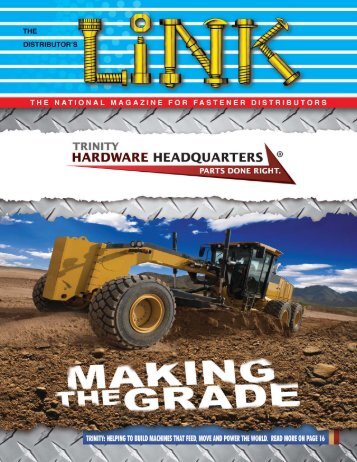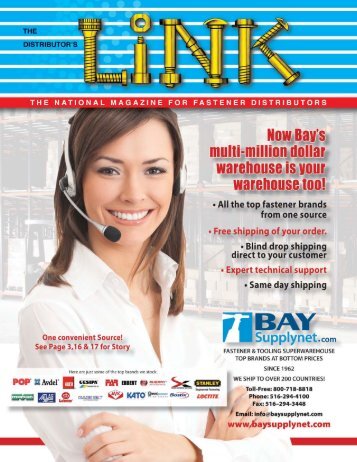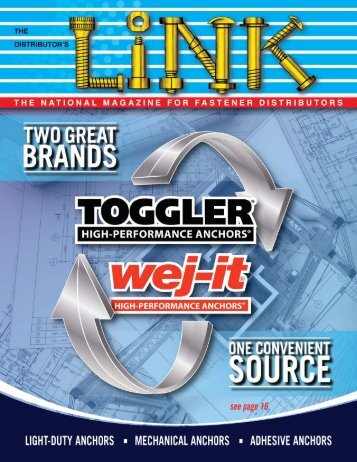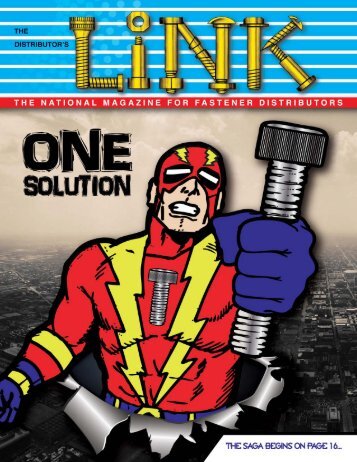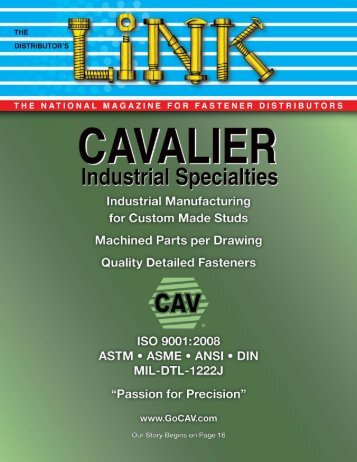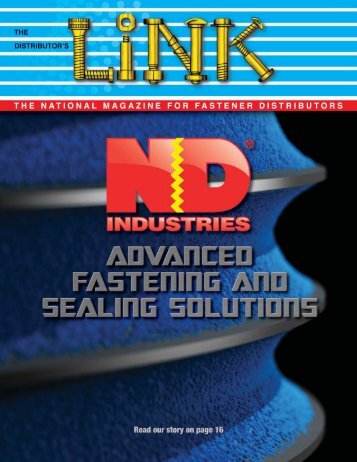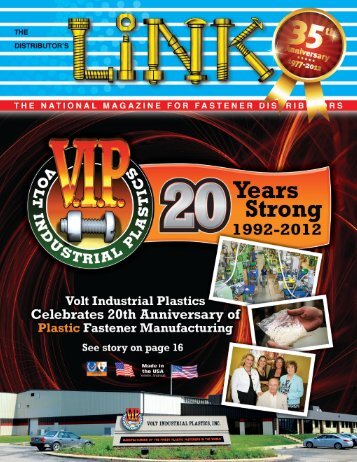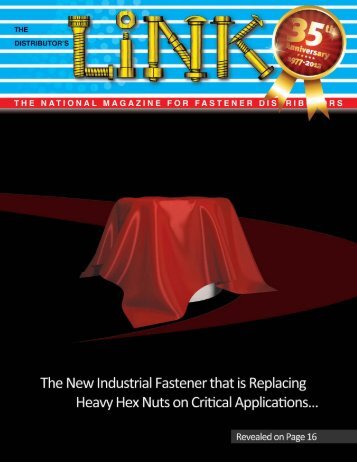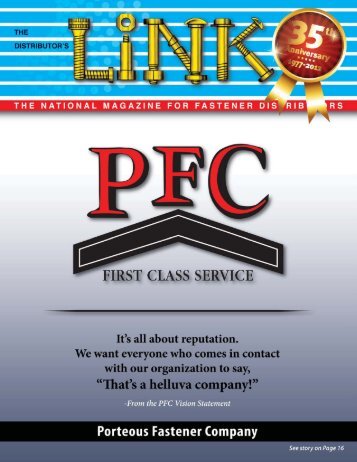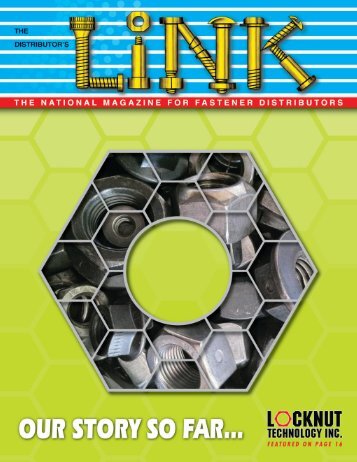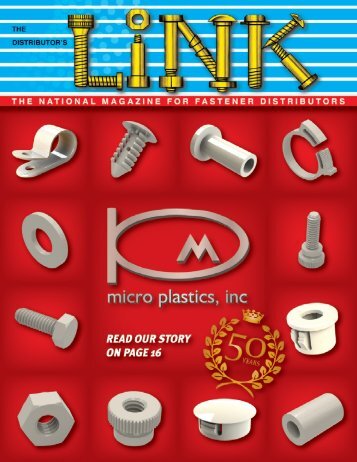SPRING 2016
- Text
- Fastener
- Fasteners
- Hydrogen
- Products
- Distributor
- Industrial
- Distributors
- Manufacturing
- Embrittlement
- Components
30 THE DISTRIBUTOR’S
30 THE DISTRIBUTOR’S LINK Lorri Hunt Lorri Hunt, a U.S. technical expert and co-convener for ISO 9001:2015. She is the coauthor of the upcoming ISO 9001:2015 Handbook, A Practical Guide to Implementation published by Paton Profession. She is an Exemplar Global lead auditor, a frequent contributor to quality publications and journals, and a speaker all over the world. She is the president of Lorri Hunt and Associates Inc. and may be contacted at lorri.hunt@gmail.com. THREE THINGS TO KNOW ABOUT THE ISO 9001:2015 REVISION ISO 9001:2015 was published in September 2015. With the release of any standard, there is always speculation related to what is required or not required by a revision. Here are three things that users should know about the revision that will help them with the transition. The Standard Is Less Prescriptive ISO 9001 is no longer a standard that is used just by manufacturing organizations. This resulted in the need to adapt the standard to provide requirements that can be implemented by any type of organization. This was accomplished by reducing the prescriptive nature of some requirements and the integration of the term products and services, which replaces products. In other instances, the word product has been replaced by output, which could be a product, service, or process. This improves the understanding for these types of organizations. When reviewing the revised requirements, some users might feel the need to make some change to the quality management system. However, the change to products and services should not require change for many users. For users in the service industry, this change along with revised language to clarify the requirement could result in the need to make some small modification to the quality management system. CONTRIBUTOR ARTICLE Understand Documented Information and Auditability In addition to the transition to products and services, the standard is less prescriptive in some of its requirements as risk-based thinking can be leveraged to determine when documented information is needed. This change means that there are no specific requirements for documented procedures or a quality manual. In the 1994 version of the standard, there were seventeen requirements for documented procedures. This was reduced to six required documented procedures for the 2000 and 2008 versions of ISO 9001. Now organizations will need to determine what documented information is needed beyond the minimal requirements included in ISO 9001:2015. Clause 4.4.2 (quality management system and its processes) include requirements that an organization determine what documented information it needs to demonstrate control of processes and provide objective evidence of conformance. This change in requirement should not have that large of an influence on the level of documented information that an organization determines it needs, because organizations have typically required more documented information than the specific requirements that were included in ISO 9001. CONTINUED ON PAGE 118
- Page 8: 6 THE DISTRIBUTOR’S LINK Already
- Page 12: 10 THE DISTRIBUTOR’S LINK NATIONA
- Page 16: 14 THE DISTRIBUTOR’S LINK Guy Ave
- Page 28: 26 THE DISTRIBUTOR’S LINK Richard
- Page 34: 32 THE DISTRIBUTOR’S LINK COMPUTE
- Page 37 and 38: THE DISTRIBUTOR’S LINK 35
- Page 40: 38 THE DISTRIBUTOR’S LINK LOCKNUT
- Page 44: 42 THE DISTRIBUTOR’S LINK FASTENE
- Page 47: THE DISTRIBUTOR’S LINK 45
- Page 52: 50 THE DISTRIBUTOR’S LINK Roman B
- Page 55 and 56: EUROLINK FASTENER SUPPLY SERVICE 84
- Page 58 and 59: 56 THE DISTRIBUTOR’S LINK YOUNG F
- Page 60: 58 THE DISTRIBUTOR’S LINK Larry B
- Page 63 and 64: THE DISTRIBUTOR’S LINK 61
- Page 66: 64 THE DISTRIBUTOR’S LINK Offshor
- Page 69 and 70: INNOVATIVE COMPONENTS INC. 1050 Nat
- Page 72 and 73: 70 THE DISTRIBUTOR’S LINK NORTH C
- Page 74 and 75: 72 THE DISTRIBUTOR’S LINK AIRCRAF
- Page 76: 74 THE DISTRIBUTOR’S LINK Carl Po
- Page 80 and 81: 78 THE DISTRIBUTOR’S LINK GENERAL
- Page 82:
80 THE DISTRIBUTOR’S LINK BRIGHTO
- Page 85 and 86:
THE DISTRIBUTOR’S LINK 83
- Page 88:
NFDA/PAC-WEST CONFERENCE - RECEPTIO
- Page 92 and 93:
90 THE DISTRIBUTOR’S LINK MID-WES
- Page 94:
92 THE DISTRIBUTOR’S LINK THE OLA
- Page 97 and 98:
THE DISTRIBUTOR’S LINK 95 CROSSWO
- Page 99 and 100:
SEMS AND SPECIALS INC 6483 Falcon R
- Page 102:
100 THE DISTRIBUTOR’S LINK ASTM I
- Page 105 and 106:
CRESCENT MANUFACTURING 700 George W
- Page 108 and 109:
106 THE DISTRIBUTOR’S LINK GUY AV
- Page 110:
108 THE DISTRIBUTOR’S LINK JOE DY
- Page 113 and 114:
SMALLEY USA 555 Oakwood Road, Lake
- Page 116 and 117:
114 THE DISTRIBUTOR’S LINK Contin
- Page 118 and 119:
116 THE DISTRIBUTOR’S LINK ROBERT
- Page 120:
118 THE DISTRIBUTOR’S LINK LORRI
- Page 123 and 124:
THE DISTRIBUTOR’S LINK 121 WOMEN
- Page 126 and 127:
124 THE DISTRIBUTOR’S LINK SALIM
- Page 128:
126 THE DISTRIBUTOR’S LINK JIM TR
- Page 131 and 132:
THE DISTRIBUTOR’S LINK 129 ISSCO,
- Page 136 and 137:
134 THE DISTRIBUTOR’S LINK LARRY
- Page 138 and 139:
136 THE DISTRIBUTOR’S LINK ANDREW
- Page 146 and 147:
144 THE DISTRIBUTOR’S LINK AIRCRA
- Page 148:
146 THE DISTRIBUTOR’S LINK GENERA
- Page 151 and 152:
Specialty Resources, Inc. (SRI) is
- Page 153 and 154:
THE DISTRIBUTOR’S LINK 151 NORTH
- Page 155 and 156:
Batching Systems, Inc. has been eng
- Page 157 and 158:
THE DISTRIBUTOR’S LINK 155 Full L
- Page 160 and 161:
158 THE DISTRIBUTOR’S LINK RICHAR
- Page 162 and 163:
160 THE DISTRIBUTOR’S LINK ROBERT
- Page 164:
162 THE DISTRIBUTOR’S LINK SALIM
- Page 167 and 168:
THE DISTRIBUTOR’S LINK 165
- Page 169 and 170:
THE DISTRIBUTOR’S LINK 167 FCH SO
- Page 172 and 173:
170 THE DISTRIBUTOR’S LINK RICHAR
- Page 174:
172 THE DISTRIBUTOR’S LINK RICHAR
- Page 177 and 178:
THE DISTRIBUTOR’S LINK 175 Perkin
- Page 180 and 181:
178 THE DISTRIBUTOR’S LINK Lucien
- Page 182 and 183:
180 THE DISTRIBUTOR’S LINK METROP
- Page 184 and 185:
182 THE DISTRIBUTOR’S LINK LUCIEN
- Page 186:
184 THE DISTRIBUTOR’S LINK Regist
- Page 192:
190 THE DISTRIBUTOR’S LINK I cont
Inappropriate
Loading...
Mail this publication
Loading...
Embed
Loading...
|
SHARE A PAGE FROM THIS MAGAZINE OPTION 1: Click on the share tab above, or OPTION 2: Click on the icon (far right of toolbar) and then click on the icon (far right of toolbar) and then click on the  icon (top right of the page). icon (top right of the page).
|
View Archives
Copyright © Distributor's Link, Inc. All Rights Reserved | Privacy Policy







